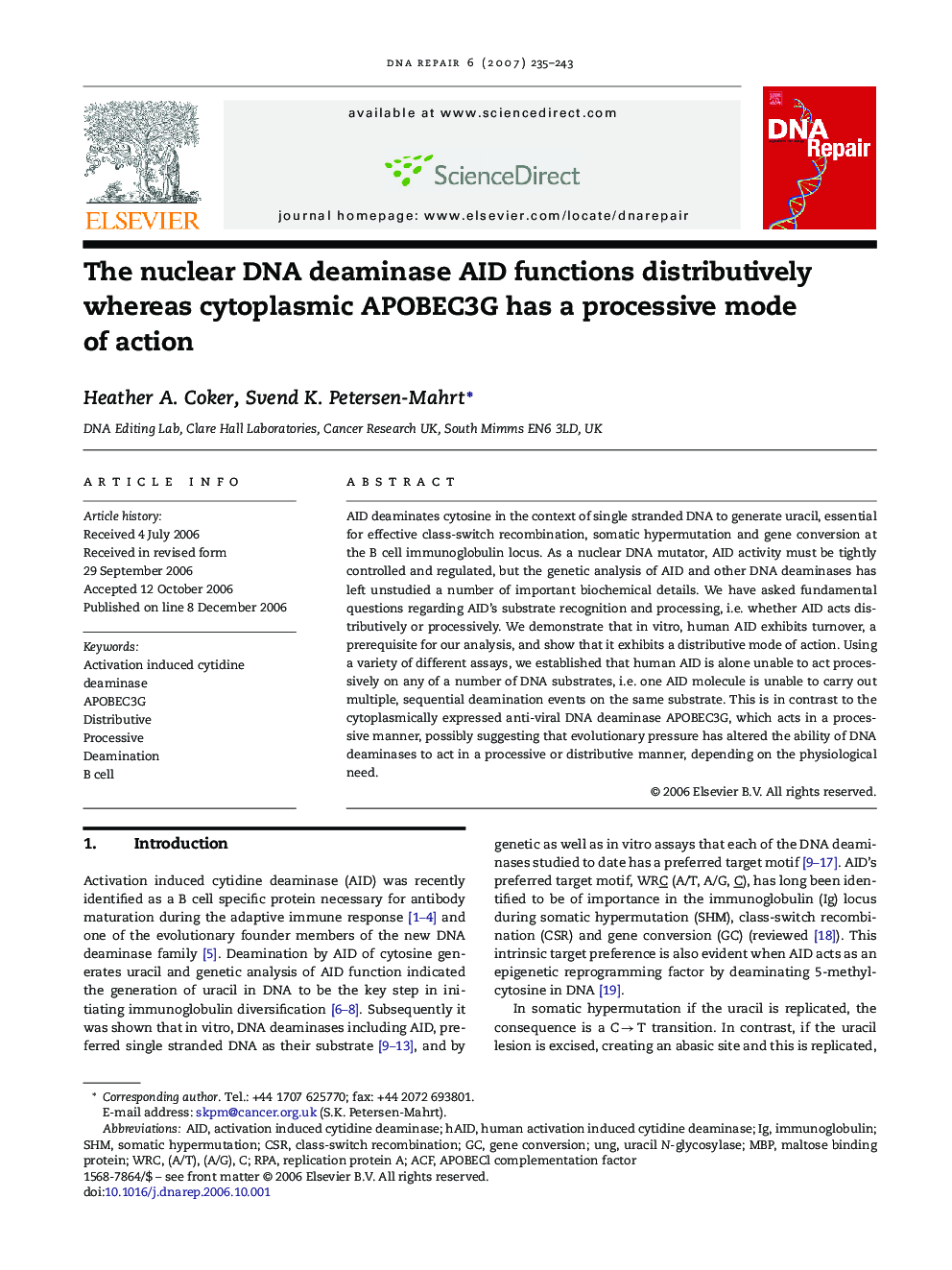| Article ID | Journal | Published Year | Pages | File Type |
|---|---|---|---|---|
| 1981465 | DNA Repair | 2007 | 9 Pages |
Abstract
AID deaminates cytosine in the context of single stranded DNA to generate uracil, essential for effective class-switch recombination, somatic hypermutation and gene conversion at the B cell immunoglobulin locus. As a nuclear DNA mutator, AID activity must be tightly controlled and regulated, but the genetic analysis of AID and other DNA deaminases has left unstudied a number of important biochemical details. We have asked fundamental questions regarding AID's substrate recognition and processing, i.e. whether AID acts distributively or processively. We demonstrate that in vitro, human AID exhibits turnover, a prerequisite for our analysis, and show that it exhibits a distributive mode of action. Using a variety of different assays, we established that human AID is alone unable to act processively on any of a number of DNA substrates, i.e. one AID molecule is unable to carry out multiple, sequential deamination events on the same substrate. This is in contrast to the cytoplasmically expressed anti-viral DNA deaminase APOBEC3G, which acts in a processive manner, possibly suggesting that evolutionary pressure has altered the ability of DNA deaminases to act in a processive or distributive manner, depending on the physiological need.
Keywords
Related Topics
Life Sciences
Biochemistry, Genetics and Molecular Biology
Biochemistry
Authors
Heather A. Coker, Svend K. Petersen-Mahrt,
